The western third of North Carolina is situated within the Great Smoky Mountains and the Blue Ridge Mountains. Both of these ranges are part of the larger Appalachian Mountain range. If you’re looking to buy a second home, check out the nine most expensive mountain towns in North Carolina. This region offers spectacular mountain views in communities that range from quaint small towns to bustling metropolises. Along with outdoor activities, cities in this region are known for maintaining strong ties to local artists, cultural traditions, and history.
1. Blowing Rock
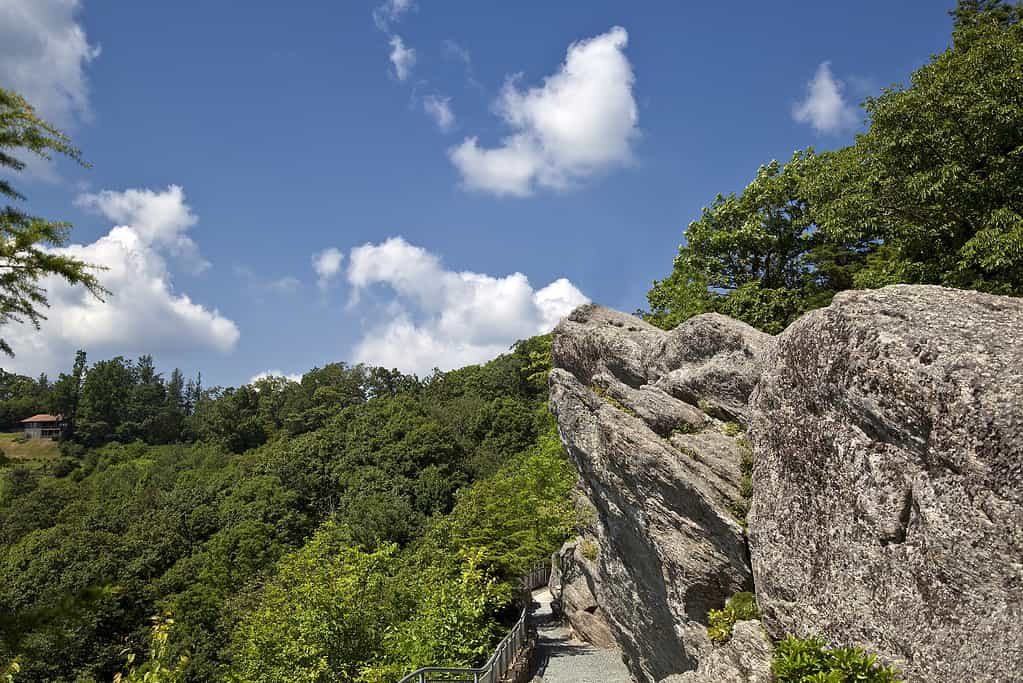
The hike to Blowing Rock provides views of nearby Grandfather Mountain and Table Rock.
©Jill Lang/Shutterstock.com
The legend of Blowing Rock is an ancient story of forbidden love between members of the Catawba and Cherokee Indian Tribes. The pair were walking when the man was signaled to return to his tribe, but not wanting to leave his lover, he threw himself from the cliffs. The woman asked the winds to return him to her, and the story lives on to this day.
In the 1880s, the area began to grow as a tourist destination for its fresh air and mountain views. The town was incorporated in 1889 and has since been known as the “Crown Jewel of the Blue Ridge.” The average home value in Blowing Rock today is just over $670,000, making this one of the most expensive mountain towns in North Carolina.
Blowing Rock offers an abundance of outdoor activities with multiple lakes, ski resorts, and trails for biking and hiking. Additionally, there are several historic areas to explore, and Blowing Rock hosts the country’s oldest continuous outdoor horse show in the country.
2. Banner Elk
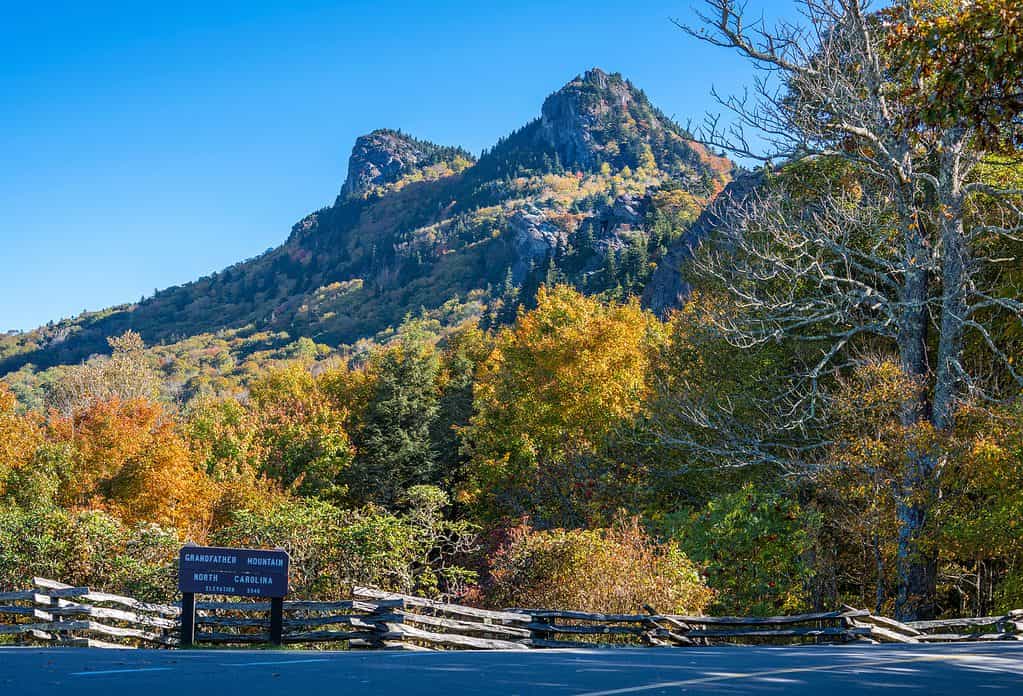
Grandfather Mountain State Park near Banner Elk features the country’s highest suspension footbridge.
©Margaret.Wiktor/Shutterstock.com
Located near the North Carolina-Tennessee border, Banner Elk was settled in the 1820s by fur traders and farmers. Agriculture continues to be an important part of the city’s economy, and some call it the “Christmas tree capital of the world.”
Banner Elk is one of North Carolina’s most expensive mountain towns, with an average home value that exceeds $540,000. The city is a short distance from Grandfather Mountain State Park, where you can cross the Mile High Swinging Bridge. Activities are available year-round in Banner Elk, with hiking and biking trails, lakes, and ski resorts.
3. Weaverville

Lake Louise is a five-acre lake that is a popular spot for fishing.
©Gingo Scott/Shutterstock.com
Located just 10 miles north of Asheville, Weaverville boasts all the natural beauty of the Blue Ridge Mountains, as well as a vibrant arts community. Twice a year, the Weaverville Arts Safari showcases local artists, and its annual juried art show features over 100 entries.
Weaverville’s average home value is $463,300, earning it a spot as one of the state’s most expensive mountain towns. Residents in the area can enjoy Lake Louise Park for picnicking, exercising, and fishing. The Main Street Nature Park is a 10-acre stretch along the town’s main road and provides a habitat for native plants and animals.
4. Boone
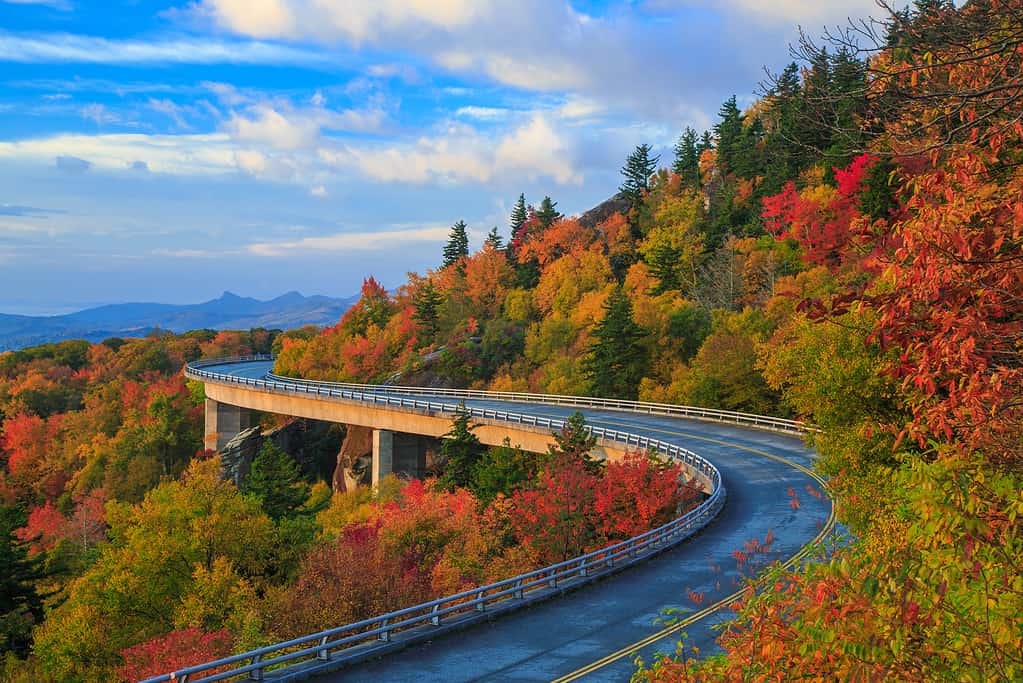
The Linn Cove Viaduct near Boone, pictured here, is one of the most popular spots for photography on the Blue Ridge Parkway.
©jaredkay/iStock via Getty Images
Named after early resident and American folk hero Daniel Boone, the city of Boone has drawn people to its beautiful views and fresh mountain air for centuries. Accordingly, you can walk in Daniel Boone’s footsteps on trails at Elk Knob State Park or explore one of the historic cabins around Boone.
This mountain town features over a half dozen museums and is home to Appalachian State University. The average home value in Boone is $459,104, and people who live in the area can explore the nearby Blue Ridge Parkway with over 50 hiking trails.
5. Black Mountain
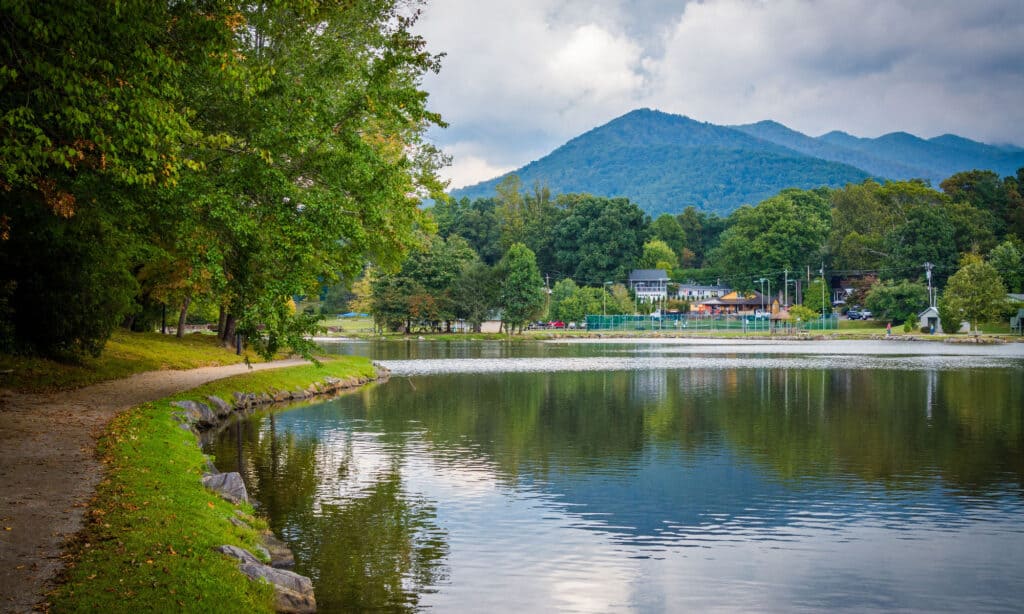
Lake Tomahawk in Black Mountain is part of a 16-acre park with tennis courts, walking trails, and a playground.
©Jon Bilous/Shutterstock.com
By the time it was founded in 1893, Black Mountain was already an important stop for travelers, trade, and the railroad. Founders named the town after the Black Mountains that run along the area’s northern border. Mount Mitchell — the tallest mountain east of the Mississippi River — is located within this range.
Home values in Black Mountain average just over $450,000. This mountain town boasts easy access to outdoor activities, including the 16-acre Lake Tomahawk Park. In addition, the Swannanoa River runs through Black Mountain, and the Pisgah National Forest is a short drive away.
6. Asheville
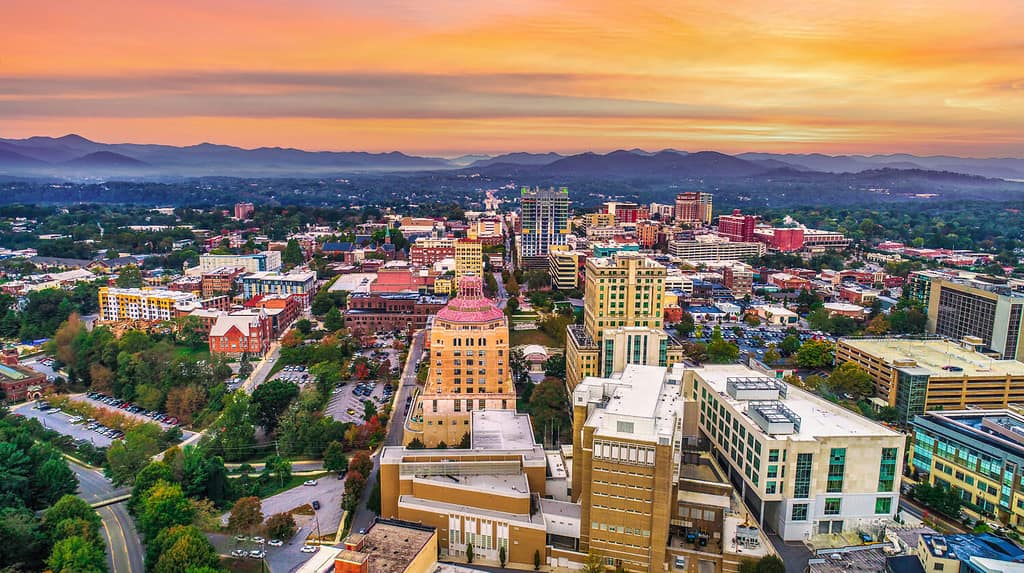
Downtown Asheville is a regional hub for artists, artisans, and crafters.
©Kevin Ruck/Shutterstock.com
The City of Asheville was established in 1797 as an outpost in the Blue Ridge Mountains. The city sits at the confluence of the Swannanoa and French Broad Rivers. The railroads arrived in the area in 1880, subsequently bringing an increase in trade and prosperity.
Today, Asheville is well known for its thriving arts community, breweries, restaurants, and historic downtown. There are several buildings from the early 1900s that still stand today, adding an Art Deco flair to the surrounding mountain views.
The average home value in Asheville today stands at $450,660, placing it solidly among North Carolina’s most expensive mountain towns. Nestled deep in the Blue Ridge Mountains, the city offers easy access to hiking trails, waterfalls, swimming holes, and ski resorts.
7. Brevard

Eight miles from Brevard, Sliding Rock features a waterfall that sends 11,000 gallons of water down the cliff every minute.
©Jill Lang/Shutterstock.com
Located near the North Carolina-South Carolina state border, Brevard is minutes from the Pisgah National Forest. Settlers began to arrive in the area following the Revolutionary War, and over the years, it developed an economy based on timber and tanning.
Today, Brevard is a mountain town known for the many waterfalls in the area, including Sliding Rock, which is a popular natural water slide and swimming destination. Brevard is also where forest conservation in the United States began, and the Cradle of Forestry Museum preserves that history. In addition, Brevard is home to a population of white — but not albino — squirrels, which arrived with a traveling carnival.
Homes in Brevard have an average value of just over $430,000. Nature surrounds residents in the area with forests, rivers, and waterfalls. There are a multitude of hiking trails, biking trails, and nature preserves to enjoy the beauty of the surrounding mountains.
8. Waynesville
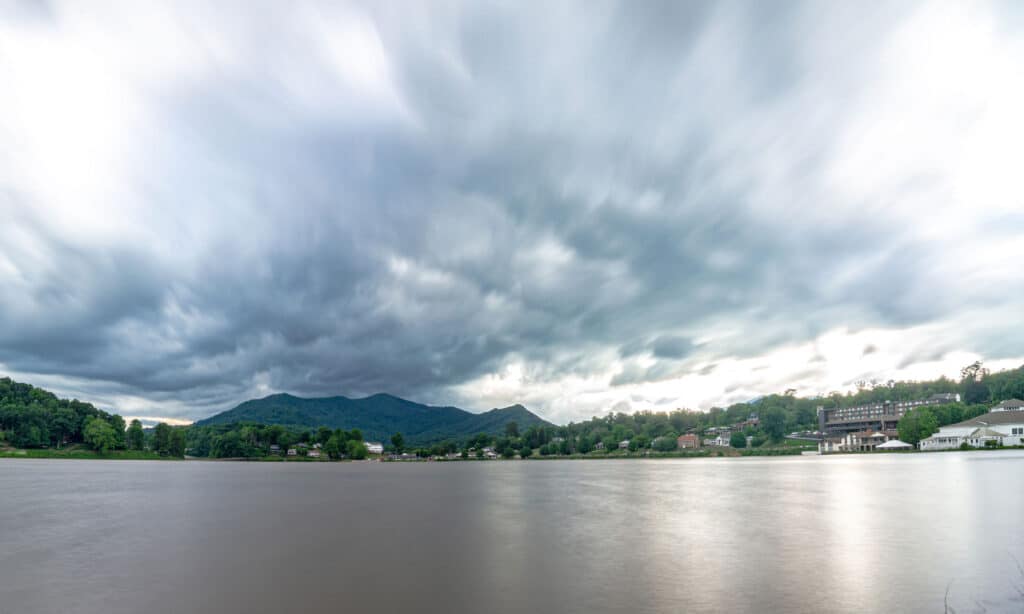
Lake Junaluska near Waynesville is a 200-acre lake with hiking trails, cabins, and fishing.
©iStock.com/digidreamgrafix
Located a short distance from the Great Smoky Mountains National Park, Waynesville is the oldest city in Haywood County. Officially incorporated in 1871, the town has been a popular destination for many years due to its beautiful mountain views and fresh air.
The average property value in Waynesville is around $358,000. The town boasts a historic downtown area, an award-winning theater, and museums. In addition, Waynesville hosts annual events and festivals that celebrate art, folk music, and crafts.
9. Marshall

The French Broad River, which runs through Marshall, is the country’s oldest river.
©Dominick Aprile/Shutterstock.com
Situated along the banks of the French Broad River, Marshall played an important role as a stop for farmers moving livestock to markets. The town’s economy struggled, however, when the interstate system bypassed the town, taking valuable trade and commerce to larger cities.
Today, home values in Marshall average just over $340,000. The community is a hub for artists, especially for those who practice traditional styles of art and music. Marshall is bordered by the Pisgah, Cherokee, and Nantahala National Forests, which offer plenty of opportunities for camping, hiking, fishing, and exploring.
| Location | Average Home Value |
|---|---|
| Blowing Rock | $671,759 |
| Banner Elk | $541,888 |
| Weaverville | $463,300 |
| Boone | $459,104 |
| Black Mountain | $452,396 |
| Asheville | $450,660 |
| Brevard | $431,581 |
| Waynesville | $358,763 |
| Marshall | $343,432 |
The photo featured at the top of this post is © A-Z-Animals.com/ A-Z Animals
Thank you for reading! Have some feedback for us? Contact the AZ Animals editorial team.







